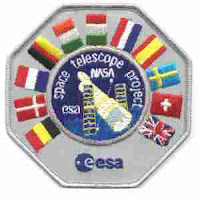Aerospace engineering.
Jan. 19, 2013
NASA Signs Agreement for a European-Provided Orion Service Module
NASA signed an agreement in mid-December for the European Space Agency (ESA) to provide a service module for the Orion spacecraft’s Exploration Mission-1 in 2017.
Image above: As part of a new agreement between the two space agencies, the European Space Agency will provide the service module for NASA’s Orion spacecraft. Image credit: NASA.
When the Orion spacecraft blasts off atop NASA’s Space Launch System rocket in 2017, attached will be the ESA-provided service module – the powerhouse that fuels and propels the Orion spacecraft.
Orion Service Module. Image credit: NASA.
“Space has long been a frontier for international cooperation as we explore,” said Dan Dumbacher, deputy associate administrator for Exploration System Development at NASA Headquarters in Washington. “This latest chapter builds on NASA’s excellent relationship with ESA as a partner in the International Space Station, and helps us move forward in our plans to send humans farther into space than we’ve ever been before.”
The agreement primarily maps out a plan for ESA to fulfill its share of operational costs and additional supporting services for the International Space Station by providing the Orion service module and necessary elements of its design for NASA’s Exploration Mission-1 in 2017.
Orion’s Exploration Mission-1 animation
There are three major components to the Orion vehicle: the crew capsule, which will carry four astronauts into space on crewed flights and bring them home for a safe landing; the launch abort system, which would pull the crew module to safety in the unlikely event of a life-threatening problem during launch; and the service module, which will house Orion’s power, thermal and propulsion systems. The service module is located directly below the crew capsule and will contain the in-space propulsion capability for orbital transfer, attitude control and high-altitude ascent aborts. It also will generate and store power and provide thermal control, water and air for the astronauts. It will remain connected to the crew module until just before the capsule returns to Earth.
Image above: As part of a new agreement between the two space agencies, the European Space Agency will provide the service module for NASA’s Orion spacecraft. Image credit: ESA, D. Ducros.
“This is not a simple system” said Mark Geyer, Orion Program manager. “ESA’s contribution is going to be critical to the success of Orion’s 2017 mission."
Exploration Mission-1 in 2017 will be the first integrated flight test with both the Orion spacecraft and NASA’s new Space Launch System. It will follow the upcoming Exploration Flight Test-1 in 2014, in which an uncrewed Orion will launch atop a Delta IV Heavy rocket and fly to an altitude of 3,600 miles above Earth’s surface, farther than a human spacecraft has gone in 40 years. For the flight test, a test service module is being built by Lockheed Martin.
Exploration Mission-1 in 2017 will launch an uncrewed Orion spacecraft to demonstrate the performance of the integrated Space Launch System rocket and the spacecraft prior to a crewed flight. It will be followed by Exploration Mission-2, which will launch Orion and a crew of four astronauts into space.
“We have a lot to look forward to in the coming years with human exploration,” Dumbacher said. “NASA is thrilled to have ESA as a partner as we set out to explore our solar system.”
Related links:
ESA Workhorse to power NASA'S Orion Spacecraft: http://www.esa.int/Our_Activities/Human_Spaceflight/Research/ESA_workhorse_to_power_NASA_s_Orion_spacecraft
View images from Orion Partnership News Conference: http://www.flickr.com/photos/nasa2explore/sets/72157632541988740/
View the Orion Service Module Briefing Graphics: http://www.nasa.gov/exploration/systems/mpcv/images/orion_sm_011613.html
NASA to Test Bigelow Expandable Module on Space Station
NASA Deputy Administrator Lori Garver announced Jan. 16 a newly planned addition to the International Space Station that will use the orbiting laboratory to test expandable space habitat technology. NASA has awarded a $17.8 million contract to Bigelow Aerospace to provide a Bigelow Expandable Activity Module (BEAM), which is scheduled to arrive at the space station in 2015 for a two-year technology demonstration.
Bigelow Expandable Module on Space Station
"Today we're demonstrating progress on a technology that will advance important long-duration human spaceflight goals," Garver said. "NASA's partnership with Bigelow opens a new chapter in our continuing work to bring the innovation of industry to space, heralding cutting-edge technology that can allow humans to thrive in space safely and affordably."
The BEAM is scheduled to launch aboard the eighth SpaceX cargo resupply mission to the station contracted by NASA, currently planned for 2015. Following the arrival of the SpaceX Dragon spacecraft carrying the BEAM to the station, astronauts will use the station's robotic arm to install the module on the aft port of the Tranquility node.
After the module is berthed to the Tranquility node, the station crew will activate a pressurization system to expand the structure to its full size using air stored within the packed module.
During the two-year test period, station crew members and ground-based engineers will gather performance data on the module, including its structural integrity and leak rate. An assortment of instruments embedded within module also will provide important insights on its response to the space environment. This includes radiation and temperature changes compared with traditional aluminum modules.
Bigelow Expandable Activity Module Installation Animation
"The International Space Station is a uniquely suited test bed to demonstrate innovative exploration technologies like the BEAM," said William Gerstenmaier, associate administrator for human exploration and operations at NASA Headquarters in Washington. "As we venture deeper into space on the path to Mars, habitats that allow for long-duration stays in space will be a critical capability. Using the station's resources, we'll learn how humans can work effectively with this technology in space, as we continue to advance our understanding in all aspects for long-duration spaceflight aboard the orbiting laboratory."
Bigelow Expandable Module on Space Station (Artist's view)
Astronauts periodically will enter the module to gather performance data and perform inspections. Following the test period, the module will be jettisoned from the station, burning up on re-entry.
The BEAM project is sponsored by NASA's Advanced Exploration Systems (AES) Program, which pioneers innovative approaches to rapidly and affordably develop prototype systems for future human exploration missions. The BEAM demonstration supports an AES objective to develop a deep space habitat for human missions beyond Earth orbit.
For more information about Bigelow Aerospace, visit: http://www.bigelowaerospace.com
Images, Videos, Text, Credits: NASA / ESA, D. Ducros / Bigelow Aerospace.
Best regards, Orbiter.ch













.jpg)































